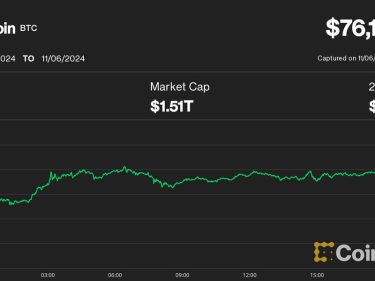This week in prediction markets:
Nobody could predict France’s electoral upset
The market is skeptical that Biden is staying in
Kalshi bettors put ether at $2,630 by year’s end
Prediction markets often outperform polls in forecasting elections – but sometimes both get it wrong. The French election was one such case.
A week ago, it looked like France’s right-wing National Rally party would secure a majority in the country’s National Assembly. Bettors on Polymarket, the crypto-based prediction market platform that’s riding high on U.S. election betting this year, were signaling a 97% chance that the National Rally would win the most seats. This was in line with polls.
Neither the prediction market traders nor the polls saw a hung parliament (an inauspicious development for France’s domestic crypto legislation) coming.
A concentrated get-out-the-vote campaign by the French left, and the strategic use of coalition parties meant that when everything was counted, the National Rally came in third place to the Ensemble (ENS) (which supports incumbent President Emanuel Macron) and the UG Union of the Left parties.
So does that mean a windfall for the Polymarket traders who bet “no” on the question of whether Marine Le Pen’s party would win the most seats? Not necessarily.
As often happens when there’s an unexpected result, there’s a dispute over how this Polymarket contract should be resolved.
This dispute concerns whether coalitions like Ensemble should count as parties. If they don’t, then the National Rally still technically won the most seats, despite losing the election.
“The ‘Liste des nuances’ includes both individual parties and coalitions, which supports the interpretation that the official French election results do not strictly differentiate between the two types of entities,” wrote bettor kipakipa, who had a “no” bet on the National Rally winning the most seats. “This is important for resolving the market because it suggests that official results treat coalitions as significant and comparable entities alongside individual parties.”
Some of the largest bettors on the No side bought in at 8 to 10 cents per share, meaning that if the contract resolves in their favor, they will be in for a large payout of $1 per share. Currently, the user known as asc has the largest bag on the no side with 24,192 shares that he or she purchased for an average of 10 cents a share.
“I’m the sitting President of the United States. I’m the nominee of the Democratic party. I’m staying in the race,” Joe Biden’s campaign posted on X on Friday, hours before ABC News broadcasted his interview with George Stephanopoulos.
Markets were not convinced.
The President’s reelection odds remained at 11% on Polymarket after the ABC interview, CoinDesk reported over the weekend, though they ticked up slightly to 15% by Monday. Biden’s chances of dropping out lingered around 65% after the broadcast, sliding to 57% by Monday – leaving a still better-than-even chance he’ll throw in the towel.
While Biden may intend to stay in, some lawmakers, and, crucially, donors, are trying to get him to reconsider.
Other related contracts are giving Biden a 37% chance of being nominated before the Democratic National Convention in August, and a 53% chance that a “major candidate” announces he or she intends to challenge Biden at the convention for nomination.
Both White House staffers and DNC elites are no doubt looking at Biden’s approval numbers as the convention – and the formal kick-off of the campaign – gets closer.
On U.S.-regulated platform Kalshi, which is not allowed to offer direct bets on races for U.S. political offices, there is a market to bet on Biden’s rating on 538, a poll aggregator, by the end of the month. Currently, bettors are saying that it’ll be approximately 36%, lower than former president Donald Trump’s numbers from Gallup in July 2020.
Even though ether (ETH) has been showing some strength as traders anticipate Ethereum exchange-traded funds (ETFs) possibly hitting the market in the near future, Kalshi bettors are forecasting that the cryptocurrency will test $2,600 by the end of the year and maybe even dip under $2,000.
Currently ether is trading above $3,000.
The crypto market has been giving mixed signals, with bitcoin seeing some of its worst performance since the height of the 2022 FTX crisis. Overall, the world’s largest digital asset is down more than 17% in the last month, according to CoinDesk Indices data.
Ether has largely followed bitcoin’s direction, though throughout the Monday trading day in Asia it did find support as sellers hit an exhaustion point.
A big question will be how much support an ETF will give ether. Bitcoin is flat since Jan. 11, the day the ETFs started trading, while ether is down 11% in the same time period. That’s the kind of support roughly $14.7 billion in inflow can bring to an asset.




